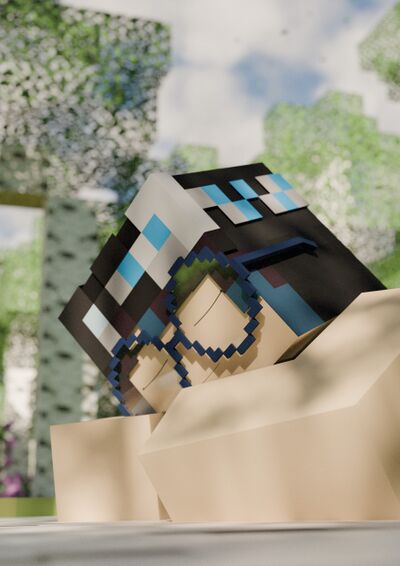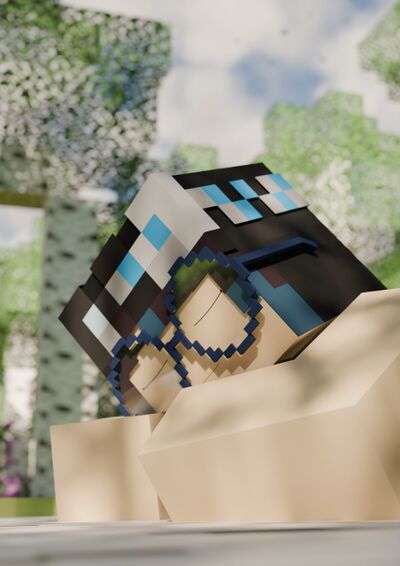Denoiser: Difference between revisions
More actions
Standingpad (talk | contribs) Link to ray tracing section on the Render Engine page |
Standingpad (talk | contribs) Add denoising example |
||
| Line 2: | Line 2: | ||
Denoisers are algorithms that, given a noisy image from a [[Render Engine#Ray Tracing|ray tracing engine]], produce a clean image.<ref>https://developer.nvidia.com/blog/ray-tracing-essentials-part-7-denoising-for-ray-tracing/</ref> This can be done through multiple means, such as blurring neighboring pixels to smooth out images. | Denoisers are algorithms that, given a noisy image from a [[Render Engine#Ray Tracing|ray tracing engine]], produce a clean image.<ref>https://developer.nvidia.com/blog/ray-tracing-essentials-part-7-denoising-for-ray-tracing/</ref> This can be done through multiple means, such as blurring neighboring pixels to smooth out images. | ||
<div><ul style="display: table; margin: 0 auto;"> | |||
<li style="display: inline-block; vertical-align: top;"> [[File:Adaptive Sampling Example - Noisy Image.jpg|thumb|none|400px|alt=Noisy image of a forest scene|Noisy version of a render using adaptive sampling]] </li> | |||
<li style="display: inline-block; vertical-align: top;"> [[File:Adaptive Sampling Example - Denoised Image.jpg|thumb|none|400px|alt=Denoised version of the noisy forest scene|Denoised version of the noisy forest scene]] </li> | |||
</ul></div> | |||
Many ray tracing engines utilize a form of [[Monte Carlo Integration]] in order to accurate approximate a scene. As a consequence however, noise is created. While increasing the number of samples can reduce the noise and eventually give a clean image, the processing time is impractical for most use cases, such as rendering an animation. Denoisers allow for reducing the amount of sampling done when rendering, while keeping a clean result. | Many ray tracing engines utilize a form of [[Monte Carlo Integration]] in order to accurate approximate a scene. As a consequence however, noise is created. While increasing the number of samples can reduce the noise and eventually give a clean image, the processing time is impractical for most use cases, such as rendering an animation. Denoisers allow for reducing the amount of sampling done when rendering, while keeping a clean result. | ||
Revision as of 22:33, 6 July 2025
Denoisers are algorithms that, given a noisy image from a ray tracing engine, produce a clean image.[1] This can be done through multiple means, such as blurring neighboring pixels to smooth out images.
Many ray tracing engines utilize a form of Monte Carlo Integration in order to accurate approximate a scene. As a consequence however, noise is created. While increasing the number of samples can reduce the noise and eventually give a clean image, the processing time is impractical for most use cases, such as rendering an animation. Denoisers allow for reducing the amount of sampling done when rendering, while keeping a clean result.
Many denoisers, such as Intel's OIDN and Nvidia's OptiX, utilize machine learning to more accurately blur noise in portions of an image without losing too much detail from a uniform blur.[2][3][4]
One common issue with denoisers, namely non-temporal denoisers, is that they can cause flickering issues in animation, due to artifacts that aren't stable across multiple frames.

